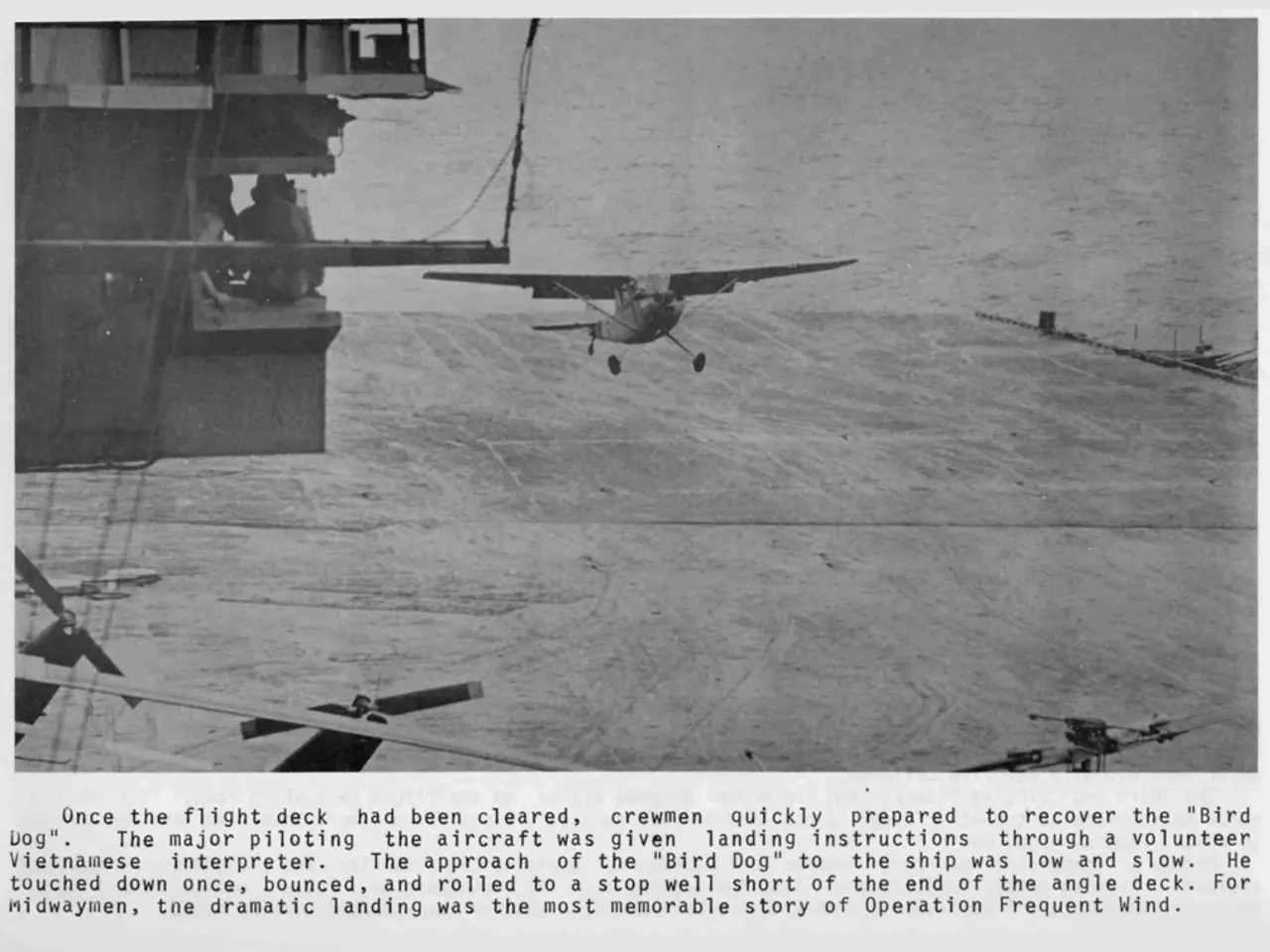Aircraft of the Pakistani Air Force reportedly have been destroyed during Operation Sindoor, according to the Air Force Chief's announcement.
In a significant turn of events, India's Operation Sindoor, carried out in May 2025, dealt a massive blow to Pakistan's air strength. The operation resulted in the downing of six Pakistani aircraft, including five fighter jets and one large surveillance aircraft, believed to be an Airborne Early Warning and Control (AEW&C) or electronic intelligence (ELINT) plane.
The large aircraft was taken down at a recorded distance of 300 kilometers, marking it as the largest-ever recorded surface-to-air kill in India's history. The operation also caused substantial damage on the ground at key Pakistan Air Force (PAF) bases such as Shahbaz Jacobabad, Bholari, and Sukkur.
Notably, an F-16 hangar at Jacobabad was reported to be half destroyed, with aircraft inside likely damaged. The Russian-made S-400 air defense system was crucial to India's success in Operation Sindoor. The S-400 enabled the Indian Air Force to shoot down the Pakistani aircraft from long distances, reportedly exceeding 300 km.
In addition to the air-to-air kills, Indian forces also targeted and damaged at least two Pakistani command and control centers (Murid and Chaklala) and destroyed multiple radar systems and hangars. The combination of precision air strikes supported by advanced air defense technology like the S-400 overwhelmed the Pakistan Air Force, prompting Pakistan to seek a ceasefire after about 90 hours of intense conflict.
Pakistan has disputed the claims of losses, calling for independent verification; however, India has maintained the accuracy of its assessments. The loss of the AEW&C aircraft dealt a massive blow to Pakistan's air strength, and another AEW&C aircraft is believed to have been destroyed in Bholari.
Air Chief Marshal Amar Preet Singh credited the S-400 system for these aerial kills, highlighting its ability to target and destroy high-value aircraft like fighter jets and AEW&C platforms at unprecedented ranges. The operation was carried out in response to the April 22 Pahalgam massacre, and there were no restrictions placed on the Indian forces during the operation.
The Indian Air Force claimed five confirmed kills during the operation, and Air Chief Marshal Singh shared 'before and after' satellite images of the terror targets that were struck during the May 7 attack. The hostilities between India and Pakistan ended on May 10. The large aircraft downed was an AEW&C, a game-changer according to Air Chief Marshal AP Singh. He also mentioned that it was difficult to convince people without such evidence after the Balakot attack.
| Aspect | Details | |-----------------------------|---------------------------------------------------------------------| | Aircraft shot down | 5 Pakistani fighter jets + 1 large AEW&C/ELINT aircraft | | Distance of notable kills | AEW&C aircraft shot down at ~300 km distance | | Damage to airbases | Significant strikes at Shahbaz Jacobabad, Bholari, Sukkur | | F-16 hangar damage | Jacobabad F-16 hangar half destroyed, planes inside likely damaged | | Role of S-400 system | Enabled long-range, high-precision surface-to-air kills | | Command centers affected | Murid and Chaklala centers hit |
- The Indian Air Force's Operation Sindoor, which took place in response to the April 22 Pahalgam massacre, saw the downing of six Pakistani aircraft including five fighter jets, one large AEW&C aircraft, and the destruction of at least two Pakistani command and control centers.
- The operation, carried out with no restrictions placed on the Indian forces, also targeted and damaged key Pakistan Air Force bases such as Shahbaz Jacobabad, Bholari, and Sukkur, with a notable surface-to-air kill recorded at approximately 300 kilometers, taking down a large AEW&C aircraft.







